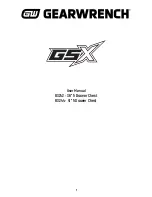
SD Card Interface Description
SanDisk Secure Digital (SD) Card Product Manual, Rev. 1.9 © 2003 SANDISK CORPORATION
3-5
CMD
CLK
DAT0-3
SD
Memory
Card
Host
1 2 3 4 5 6 7 8
SD Memory
Card
R
DAT
R
CMD
C
1
C
2
C
3
9
R
WP
Vss
Write Protect
Figure 3-3. Bus Circuitry Diagram
R
DAT
and R
CMD
are pull-up resistors protecting the CMD and the DAT line against bus floating when no card is
inserted or when all card drivers are in a hi-impedance mode. RWP is used for the Write Protect Switch. See
Section 5.4.2 for the component values and conditions.
Hot Insertion/Removal
Hot insertion and removal are allowed. The SanDisk SD Card will not be damaged by inserting or removing it into
the SD bus even when the power is up:
•
The inserted card will be properly reset also when CLK carries a clock frequency f
PP
.
•
Data transfer failures induced by removal/insertion should be detected by the bus master using the
CRC codes that suffix every bus transaction.
3.2.1. Power Protection
Cards can be inserted into or removed from the bus without damage. If one of the supply pins (V
DD
or
V
SS
)
is not
connected properly, then the current is drawn through a data line to supply the card.
Data transfer operations are protected by CRC codes; therefore, any bit changes induced by card insertion and
removal can be detected by the SD bus master. The inserted card must be properly reset also when CLK carries a
clock frequency f
pp.
If the hot insertion feature is implemented in the host, than the host has to withstand a shortcut
between V
DD
and
V
SS
without damage.
3.3. SPI Bus Topology
The SD Card SPI interface is compatible with SPI hosts available on the market. As any other SPI device the SD
Card SPI channel consists of the following four signals:
•
CS
—Host to card Chip Select signal.
•
CLK
—Host to card clock signal.
•
DataIn
—Host to card data signal.
•
DataOut
—Card to host data signal.
















































